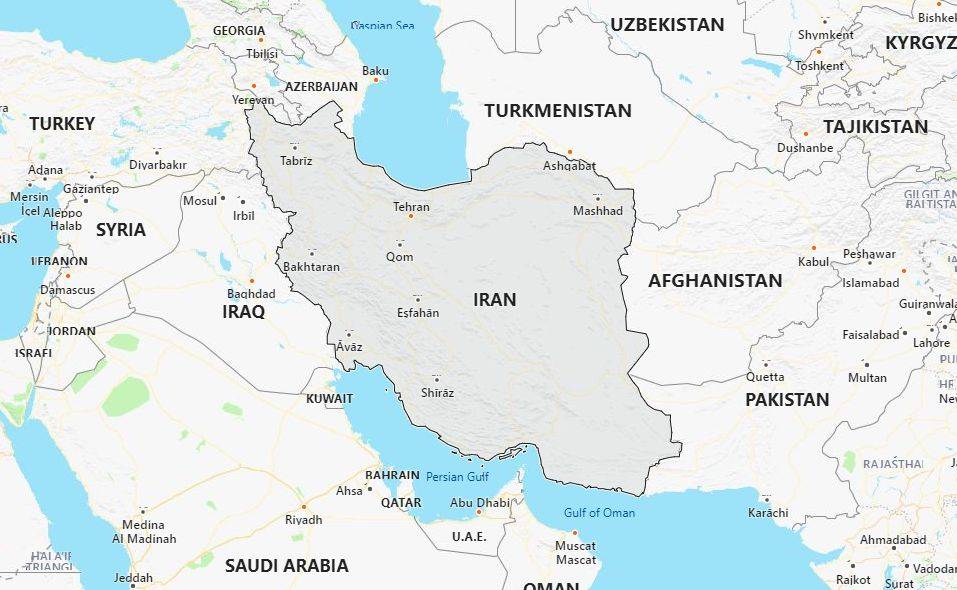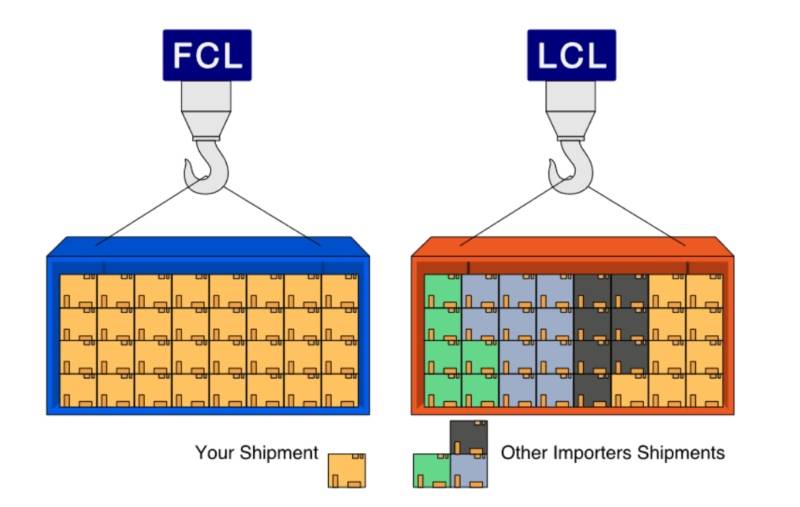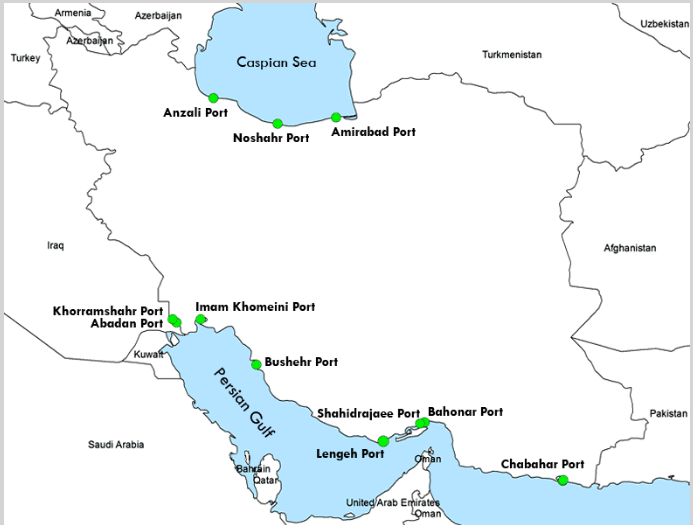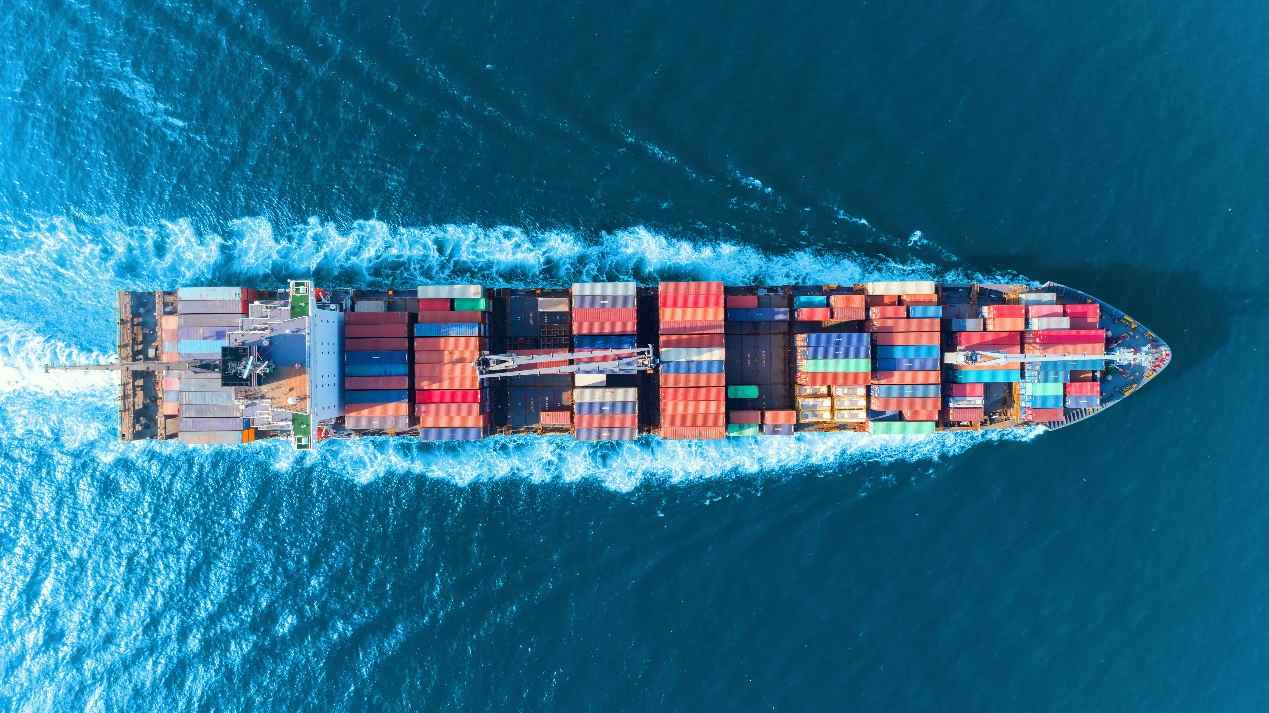2024-04-25
Iran is situated in western Asia and is classified as a Middle Eastern country. China is Iran's largest trading partner, exporting primarily electromechanical products, chemical products, steel products, and medical equipment to Iran. Among these, the most exported electromechanical products include motorcycles and their parts, motors, electronic products, tools, automotive parts, construction materials, household appliances, mining machinery, and power generation equipment. Shipping container to Iran plays a crucial role in the import and export trade between China and Iran.
The main container specifications include 20GP, 40GP, 40HQ, and 45HQ. In addition to these, there are also refrigerated, flat rack, open-top, and tank containers.

With containers shipping to Iran, companies are able to expand their global trade networks, enhance connectivity to the Iranian market, and facilitate cross-border trade while ensuring the safety and traceability of goods during long-distance transportation. Understanding and fully utilizing the importance of containerized transportation is, therefore, critical to the success of international trade with Iran.
| Connect with Jike for Comprehensive Assistance |
Containers shipping to Iran typically come in the following sizes:
20’GP - (L) 591 * (W) 234 * (H) 238CM = 32.91CBM (actual capacity around 28CBM) 40’GP - (L) 1204 * (W) 234 * (H) 238CM = 67.05 CBM (actual capacity around 56-59CBM) 40’HQ - (L) 1204 * (W) 234 * (H) 268CM = 75.50 CBM (actual capacity around 65-67CBM) 45HQ - (L) 1360 * (W) 234 * (H) 268CM = 85.28 CBM (actual capacity around 75-77CBM)
The above are theoretical dimensions; the actual load capacity and volume of containers are smaller due to differences in container sizes, making it impossible to achieve a 100% loading rate.
Each container from shipping companies has a unique container number, typically consisting of four letters followed by seven Arabic numerals (e.g., AMSU4567898).
Once containers are loaded, they are sealed with seals provided by the shipping company. Each seal has a unique number. Once the seal is broken, it becomes easy to determine responsibility for any missing goods. As long as the shipping company delivers the container intact to the designated location, ensuring the seal remains intact, the shipping task is considered complete.
Container loading requires specialized container vessel transportation. The carrying capacity of mother ships generally ranges from 2000 to 6000 TEUs (20GP = 1 TEU; 40GP = 2 TEU), while feeder ships typically carry 200-400 TEUs. Each ship has a specific name and voyage number. Unlike air freight flight numbers, sea freight voyage numbers are unique for each journey. Voyage numbers are represented as V.XXXE, with "E" indicating exports and "W" indicating imports.
Type of cargo: Different types of cargo may require different types of containers. For example, liquid cargo may require a liquid tank container, while bulk cargo may require an open container.
Cargo volume and weight: Make sure that the container you choose is large enough to accommodate the volume and weight of the cargo. Containers that are too large or too small may affect the safe transportation of the cargo and transportation costs.
Cargo Characteristics: Some cargoes are environmentally sensitive and require specially handled containers, e.g., temperature-controlled containers can be used to transport temperature-sensitive goods.
Transportation Costs: Consider the transportation costs of different container types, including rental and related costs, to ensure that the choice is both economical and tailored to the characteristics of the cargo.
Cargo Security: Select containers with appropriate security features to ensure cargo security during transportation.
| Reach out to Jike for cost-effective shipping solutions from China |

1. Full Container Load (FCL)
2. Less than Container Load (LCL)
| Reach out to Jike for cost-effective shipping solutions from China |

| Area | Container Port in Iran | Province | City |
|---|---|---|---|
| Iran Southern Port | Bander Abbas (Shahid Rajaee) | Hormozgun | Bandar Abbas |
| Iran Southern Port | Imam Khomeini | Khouzestan | Mahshahr |
| Iran Southern Port | Bander Abbas(Shahid Beheshti) | Sistan and Baloucheshtan | Chabahar |
| Iran Southern Port | Khorramshahr | Khozestan | Khorramshahr |
| Iran Southern Port | Bushehr | Boshehr | Bushehr |
| Iran Southern Port | Chabahar | Sistan and Baloucheshtan | Chabahar |
| Iran Southern Port | Lengeh | Hormozgan | Bandar Lengeh |
| Iran Southern Port | Bahounar | Hormuzgan | Bandar Abbas |
| Iran Southern Port | Abaadan | Khozestan | Abaadan |
| Northern port of Iran | Noshahr | Mazandarun | Noushahr |
| Northern port of Ira | Anzali | Gilan | Bandar Anzali |
| Northern port of Ira | Amir Abaad | Mazandarun | Neka |
Bandar Abbas Shahid Rajaee Port is Iran's most crucial port (also known as Shahid Rajaee Sez, the most important port for imports from China). Situated at the heart of the International North-South Transport Corridor (INSTC), it boasts a unique geographical position, providing access to the open sea of the Persian Gulf, connecting to the international railway network and the Silk Road, and benefiting from modern facilities, while being close to the Kish and Qeshm free zones and ports near the Persian Gulf.
Imam Khomeini Port is located at the northwest end of the Persian Gulf and the natural waterway of the Hormuz Strait. This waterway, which is 42 nautical miles long, 250 meters wide, and with an average depth of 20 meters, provides a smooth and secure passage for various commercial ocean liners and tankers.
Chabahar Port, exempted from US sanctions, is a crucial gateway to Afghanistan and Central Asian countries, situated along the Oman International Route. Due to its strategic location, it plays a vital role in the transshipment and transit of goods between Afghanistan, Central Asia, and other ports in the Persian Gulf. The port has the potential to provide various commodities and services, including containers (dry, refrigerated, open-top, and flat racks), bulk cargo, general cargo, petroleum products, water, vessels, and processing. Some unique advantages of Chabahar Port include a 75% discount on import container warehousing fees, an 85% discount on export container warehousing fees, and a 30% discount on non-container cargo handling and warehousing costs compared to other Iranian ports. Additionally, India is considering offering import duty discounts (up to 40%) on goods imported through Chabahar Port.
The direct route from Dachanbay (Shenzhen) to Dubai and B.abbas offers a short journey time, taking only 12 days to Dubai and 13 days to B.abbas. Route: Shanghai-> Kwangyang-> Busan-> Ningbo-> Kaohsiung-> Dachanbay (Shenzhen) -> Hongkong-> Dubai-> B.abbas
KHORRAMSHAHR is transited via Dubai (barge) and BUSHEHR is transited via Bandar Abbas (barge). These two ports are in economic zones in Iran, so the import volume is relatively higher compared to other inland points. Few shipping companies in the market provide shipping services to these two ports, and even if such services are available, the shipping costs are several hundred dollars more expensive than HDSL. TEHRAN, the capital of Iran, is an inland city and is transited via B.abbas, then transported to the destination by trailer. Currently, there are no other shipping companies providing transportation services to this destination.
If the documents are issued by HDSL to various points in Iran, consignees at the destination port can enjoy approximately 10% import tariff reduction benefits (please consult the consignees at the destination port for specific refund methods). Therefore, HDSL receives many designations from Iranian customers.
| Departure Port of shipping containers to Iran | Destination Port of shipping containers to Iran | Ship Container to Iran: 20GP Contanier | Ship Container to Iran: 40GP/40HQ Contanier | Vessel Departure Date |
|---|---|---|---|---|
| Nansha Port / Shekou Port | Abbas Port, Iran | $1550 | $2250 | November 17, 2023 |
| Nansha Port / Shekou Port | Abbas Port, Iran | $2150 | $3100 | March 8, 2024 |
| Nansha Port / Shekou Port | Abbas Port, Iran | $1850 | $2800 | March 14, 2024 |
| Nansha Port / Shekou Port | AbbasPort, Iran | $1850 | $2800 | March 22, 2024 |
| Nansha Port /Shekou Port | Abbas Port, Iran | $1853 | $2753 | March 29, 2024 |
| Nansha Port / Shekou Port | Abbas Port, Iran | $1903 | $2853 | April 5, 2024 |
| Ningbo Port | Abbas Port, Iran | $2000 | $3150 | April 15, 2024 |
| Nansha Port / Shekou Port, Iran | Abbas Port, Iran | $2250 | $3350 | April 25, 2024 |
| Ningbo Port / Shekou Port, Iran | Abbas Port, Iran | $2150 | $3350 | April 25, 2024 |
| Shanghai Port / Shekou Port, Iran | Abbas Port, Iran | $2100 | $3350 | April 25, 2024 |
| Tianjin Port / Shekou Port, Iran | Abbas Port, Iran | $2350 | $3350 | April 25, 2024 |
| Qingdao Port / Shekou Port, Iran | Abbas Port, Iran | $1950 | $3350 | April 25, 2024 |
| Xiamen Port / Shekou Port, Iran | Abbas Port, Iran | $2150 | $3350 | April 25, 2024 |
Shipping price depends on current market demand. If you need the latest shipping costs for shipping containers to Iran from China, please contact Jikeship.
The shipping time from China to Iran by sea is typically around 15-25 days. However, factors such as port congestion, conflicts, or other disruptions could potentially extend the voyage. If it involves transshipment or consolidation via feeder vessels, the transit time could be longer, possibly exceeding 30 days.

Currently, there are several shipping companies available in the market for serving the Iranian market, such as WHL, KMTC, ESL, WOSCO (West Sea Shipping), VOLTA (UAE Valta Shipping), NSL, TDSL, FCSL, SCL, UCL, and other non-vessel operating common carriers (NVOCCs).
1. HDSL (HAFEZ DARYA ARYA SHIPPING Co.):
Advantages:
Disadvantages:
2. NVOCCs (WOSCO, VOLTA, NSL, TDSL, FCSL, SCL, UCL, etc.)
Advantages:
Disadvantages: No direct services; usually involve transshipment from Jebel Ali, Dubai, or Nava Sheva, sometimes even Singapore, resulting in a longer transit time compared to HDSL and relatively higher prices.
Loading ports include Dalian, Tianjin, Qingdao, Shanghai, Ningbo, Xiamen, Shenzhen, Guangzhou, Guangxi, Jiangsu, and Zhuhai.
| Quote for Shipping Container to Iran |
| Whatsapp - Online Customer Service |
Confirming Cargo Data with the Factory: This includes confirming the product name, weight, and dimensions for shipment to determine the container type: whether it's a 20GP, 40GP, 40HQ, or 45HQ.
Inquiry and Booking: Usually, your factory/supplier will fill out a Booking (BK) with the freight forwarder or shipping company based on the cargo information.
The information required for booking includes: Shipper, Consignee, Notify, Port of Loading, Place of Receipt, Port of Discharge, Marks & Numbers, Number of Packages, Description of Goods, Weight (KG), Cubic Meter (CBM)
If the payment terms are L/C, the above information must match the L/C (including capitalization and punctuation). Additionally, indicate "√" next to Freight Prepaid or Freight Collect, and choose whether the documents required are a Bill of Lading (B/L) or Forwarder Cargo Receipt (FCR) under "DOCUMENT REQUIRED."
Note: Booking should be made with the freight forwarder at least 2-3 weeks before the shipment date to secure a vessel slot, especially during peak seasons.
Confirmation of Booking and Obtaining S/O (Shipping Order): Upon receiving the Shipping Order (S/O) from the freight forwarder, check if the S/O# (Shipping Order No. or Booking No.), container type, and quantity match your booking. Also, note the CY Closing Date, Vessel/Voyage, and SI Cut-Off Date on the S/O, as timely submission of the correct shipping information is crucial to avoid delays.
Container Loading Before Customs Clearance: The factory loads and delivers the goods to the port before arranging stuffing. The freight forwarder then provides the S/O to the trucking company to pick up the container from the terminal for loading. Once loaded, the cargo can be shipped out. Stuffing: Providing container details to the freight forwarder, including container number, seal number, description of goods, quantity, and weight.
Customs Declaration: The factory provides documentation for customs declaration for export, and upon clearance by customs without any issues, the goods are allowed for export.
Container Loading and Departure: The vessel arrives, and containers are loaded onto the ship for departure to the destination port.
Preparation of Clearance Documents and Arranging Customs Clearance: Prepare shipping documents, including a Commercial Invoice, Packing List, and other documents as per Iran customs requirements based on the product HS code. Ensure document consistency with the L/C and Bill of Lading.
Payment of Taxes/Duties.
Delivery.
Exporting to Iran typically requires commercial invoices, bills of lading, packing lists, freight invoices, and inspection certificates if needed.
1) Bill of Lading Requirements:
2) Booking Requirements
3) Destination Port Regulations
The taxation rates for most machinery equipment in Iran range from 5% to 10% of the cost, while certain products can be as high as 150% of the landed price.
Additionally, imported goods are subject to several minor taxes, including a 1.5% chamber of commerce tax based on the landed value. Capital goods and raw materials required for approved foreign investment projects can be exempt from tariffs, and pharmaceuticals and laboratory chemicals are not subject to tariffs.
Almost all goods are subject to a commercial profit tax, with rates typically based on weight, although some may be based on quantity or value. If calculated by weight, the customs subtracts the weight of ordinary packaging from the total weight. Tax rates based on value vary from 1% to 200%. The commercial profit tax also includes a monopoly tax, which must be paid before customs clearance.
In cases of false declaration or other violations of import regulations, customs may confiscate the goods or impose fines. If the fines remain unpaid within two months of the due date, a portion of the goods equivalent to the value of the fine will be publicly auctioned. If goods are unreasonably detained by customs, compensation fees of up to 1% of the value of the goods per month may be obtained during the detention period.
 The most common terms are FOB/CIF/CFR.
The most common terms are FOB/CIF/CFR.
FOB - Free On Board (...designated port of shipment). It means the seller delivers the goods when they pass the ship's rail at the named port of shipment. After this point, the buyer bears all costs, risks, loss, or damage to the goods, and the seller is responsible for export clearance. This term applies to maritime or inland waterway transport.
Therefore, FOB goods are usually specified by the buyer, typically with the foreign customer designating the shipper, consignee, notify party, specified shipping company, specified ocean freight sales price, cost, and sometimes the freight forwarder. Currently, 80% of China's exports are shipped on FOB terms, forming a pattern where overseas customers specify domestic freight forwarders to provide services. The choice of who represents domestically depends entirely on the Iranian buyer.
CFR or C&F - Cost and Freight (...designated port of destination). It means the seller must pay the costs and freight to bring the goods to the named port of destination. However, the risk of loss or damage to the goods, as well as any additional costs due to events occurring after the goods are delivered on board the vessel, transfer from the seller to the buyer once the goods pass the ship's rail at the named port of shipment. Additionally, the seller is responsible for the export clearance of the goods. This term applies to maritime or inland waterway transport.
CIF - Cost, Insurance, and Freight (…designated port of destination). It means the seller has the same obligations as under the CFR term, but also must procure marine insurance against the buyer’s risk of loss or damage to the goods during carriage. The seller needs to pay the costs and freight and it is necessary to bring the goods to the designated port of destination. This term also applies to maritime or inland waterway transport.
| Whatsapp - Online Customer Service |
Similarities and differences between FOB/CIF/CFR:
Their similarities are:
They apply only to maritime and inland waterway transport and not to other modes of transport. The place of delivery is at the port of shipment, meaning the seller completes delivery at the port of shipment. It is particularly important to note the CIF term, which involves delivery at the port of shipment rather than the port of destination. The transfer of risk occurs at the same point, namely when the goods pass the ship's rail at the port of shipment, transferring the risk from the exporter to the importer. They all involve symbolic delivery. The differences are twofold:
The division of responsibilities for transport and insurance between the parties. Under the FOB term, the importer is responsible for transport and insurance, while under CIF, the exporter is responsible for transport and insurance, and under CFR, the exporter is responsible for transport, and the importer is responsible for insurance. The composition of the goods' price differs. FOB is only the cost price, CIF is the "cost price + insurance premium + freight" price, and CFR is the "cost price + freight" price.

Specializing in Air Freight and seamless shipping container solutions (FCL/LCL services) to Iran, we bring extensive expertise to ++door-to-door++ & ++door-to-port++ & ++port-to-door++ & ++port-to-port++ services, warehousing, customs clearance, and comprehensive domestic logistics solutions to Iran. Whether it's transporting goods via air or sea to Iran, we ensure efficient and reliable delivery every step of the way. Our key strength lies in the swift and expert responses our professional operations team delivers, ensuring rapid handling of all inquiries and requests. We eagerly await your inquiries, pricing requirements, and any other pertinent business matters, anticipating the opportunity to serve you efficiently and effectively!
Containerized transport plays a key and indispensable role in the success of international trade. Its efficient, safe, and flexible nature not only improves the efficiency of cargo transportation but also strengthens the connection of global trade networks and provides crucial basic support for enterprises to enter the Iranian and global markets. By fully utilizing the advantages of containerized transportation, companies are able to carry out international trade more confidently and smoothly and achieve fast and reliable delivery of goods.
Note: Due to the volatile environment in Iran and significant market changes, the above information for shipping container to Iran is for reference only. For the latest updates, please contact Jikeship for the most current information.
| Ship Container to Iran -Quotation Request. |
| Whatsapp - Online Customer Service |

Here we list the top 8 freight forwarder companies in Iran. You can ask them for quotes and compare services. Hope it helps you choose the best freight forwarder in Iran.
2024-03-21

We show you details of the main Iranian Ports. Optimize your supply chain with reliable and timely sea freight services to Iran Ports with professional freight forwarders.
2024-03-28
We use third-party cookies in order to personalise your experience.
Read our cookie policy